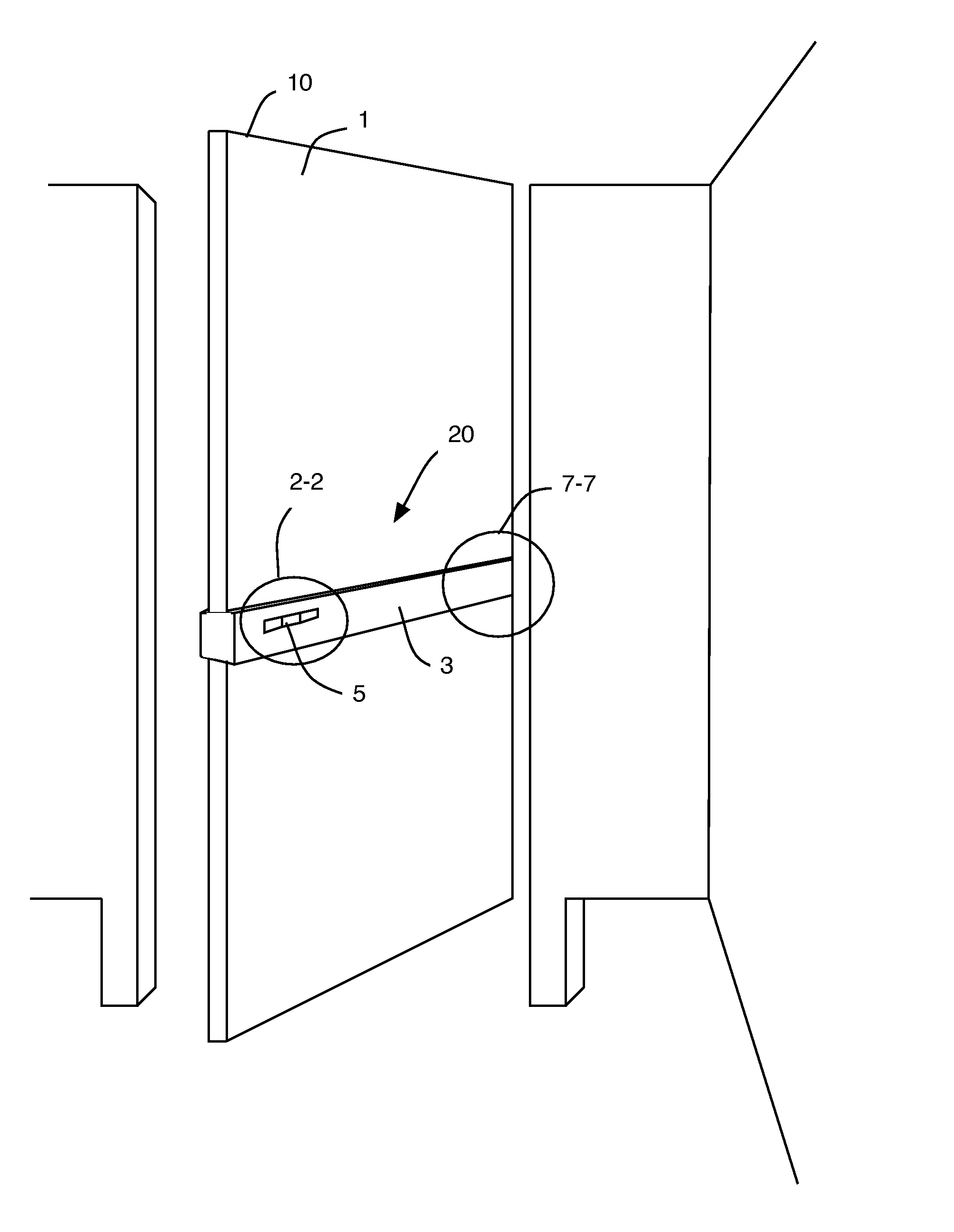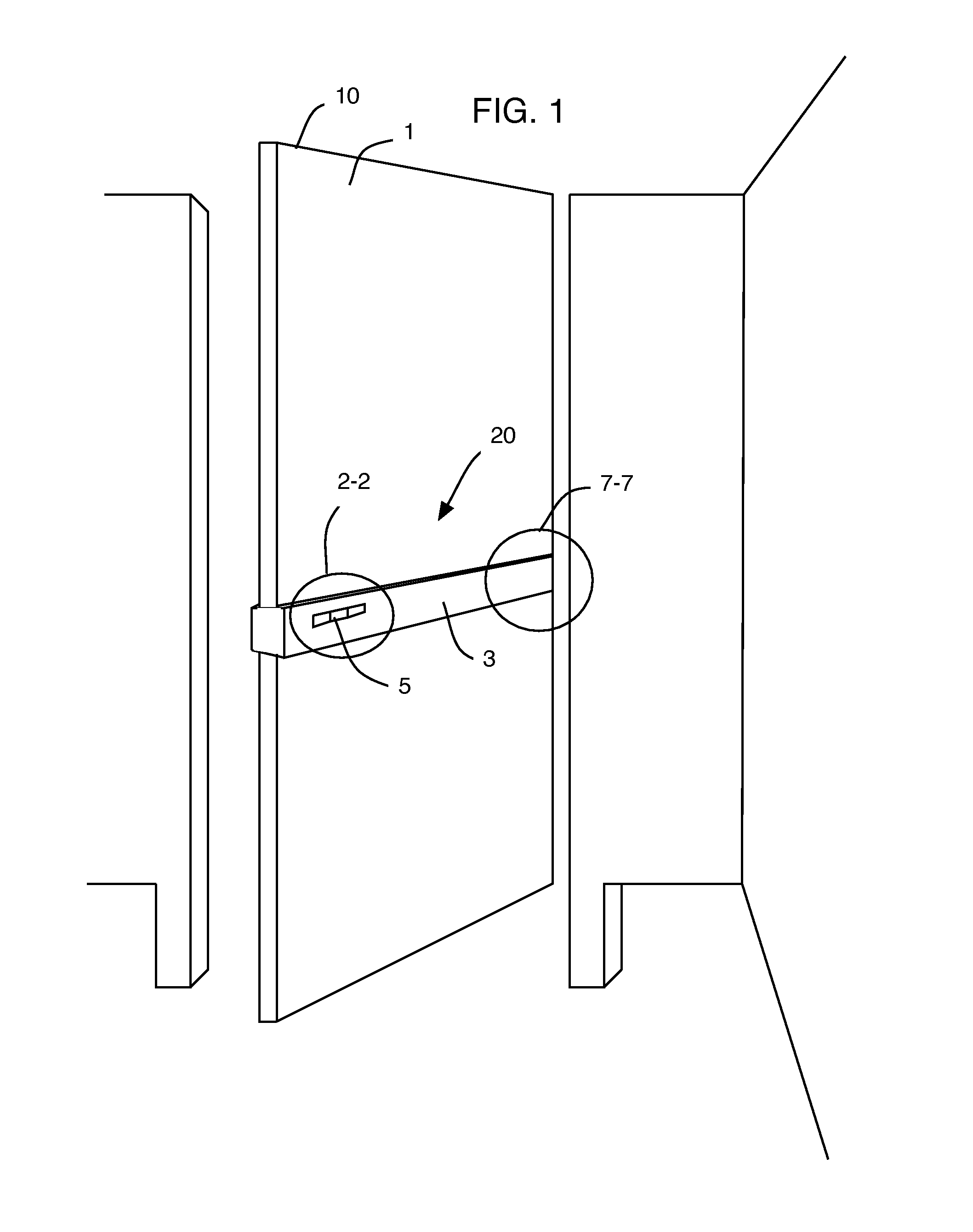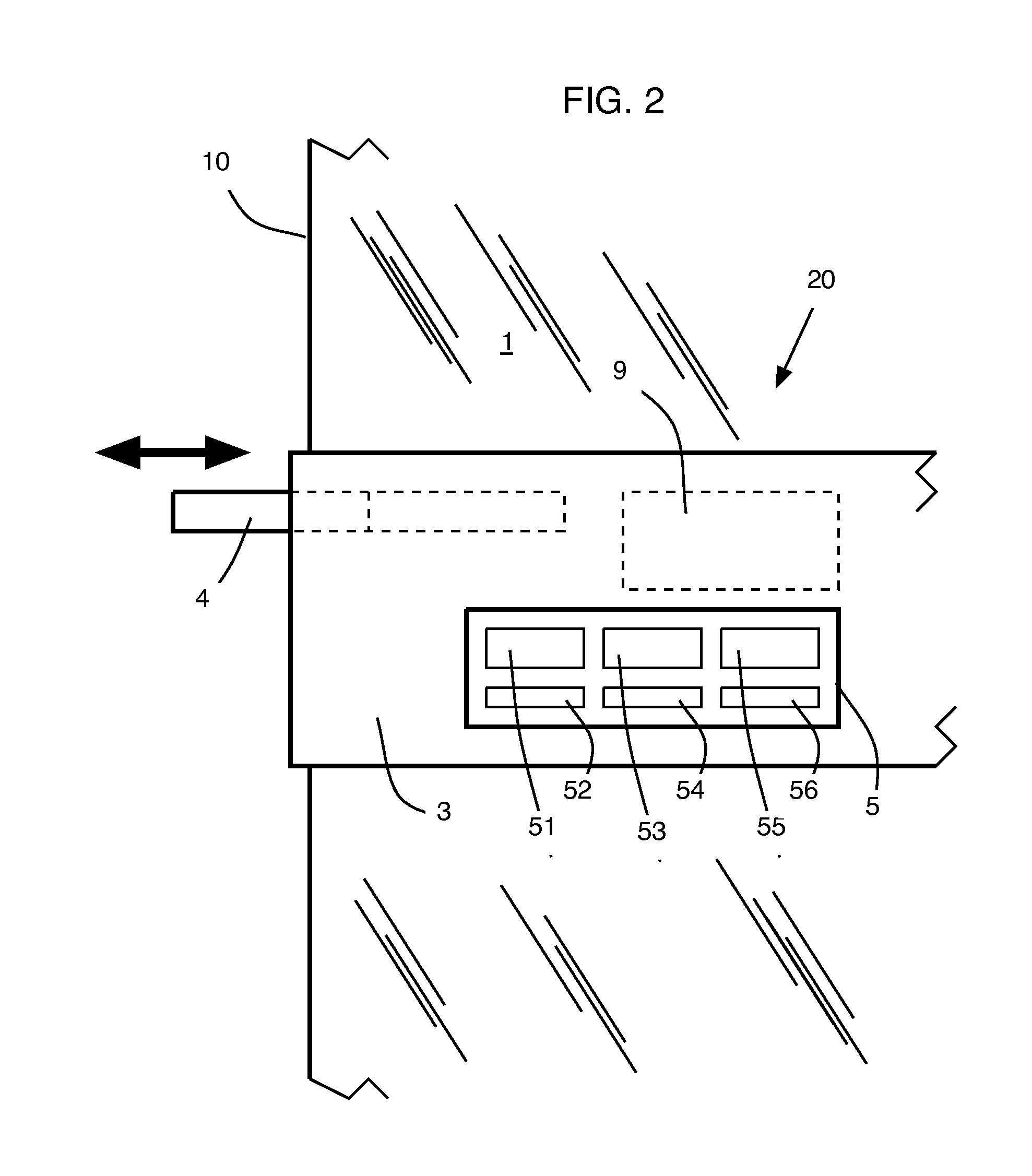Automated Bathroom-stall Door
a technology for bathroom stalls and doors, applied in the direction of instruments, process and machine control, testing/monitoring control systems, etc., can solve the problems of lack of physical space requirements for apparatuses, inability to adapt apparatuses for stalls, and failure to successfully operate and lock hands-free a bathroom stall door
- Summary
- Abstract
- Description
- Claims
- Application Information
AI Technical Summary
Benefits of technology
Problems solved by technology
Method used
Image
Examples
Embodiment Construction
[0019]Possible preferred embodiments will now be described with reference to the drawings and those skilled in the art will understand that alternative configurations and combinations of components may be substituted without subtracting from the invention. Also, in some figures certain components are omitted to more clearly illustrate the invention.
[0020]The present invention enables hands-free operation of a rest-room stall door from inside or outside and includes manual override from both sides. To prevent unintended opening of the stall-door the present invention includes sensors 14 to determine if the restroom stall is occupied. Accordingly, the improved apparatus 20 for automatically opening, closing, locking, and unlocking a swinging door includes a first actuator and power-assisted drive mechanism for opening and closing the door and a second actuator and associated power-assisted drive mechanism for locking and unlocking the door, a control unit, a power source (either on-bo...
PUM
 Login to View More
Login to View More Abstract
Description
Claims
Application Information
 Login to View More
Login to View More - R&D
- Intellectual Property
- Life Sciences
- Materials
- Tech Scout
- Unparalleled Data Quality
- Higher Quality Content
- 60% Fewer Hallucinations
Browse by: Latest US Patents, China's latest patents, Technical Efficacy Thesaurus, Application Domain, Technology Topic, Popular Technical Reports.
© 2025 PatSnap. All rights reserved.Legal|Privacy policy|Modern Slavery Act Transparency Statement|Sitemap|About US| Contact US: help@patsnap.com



